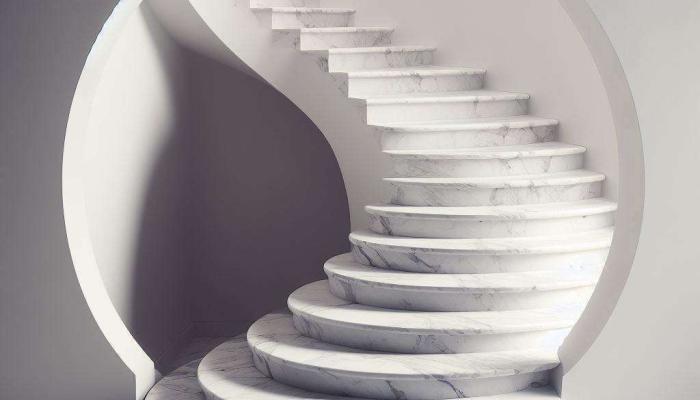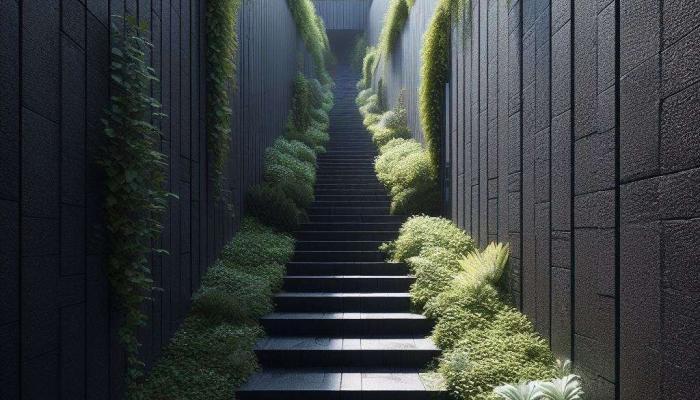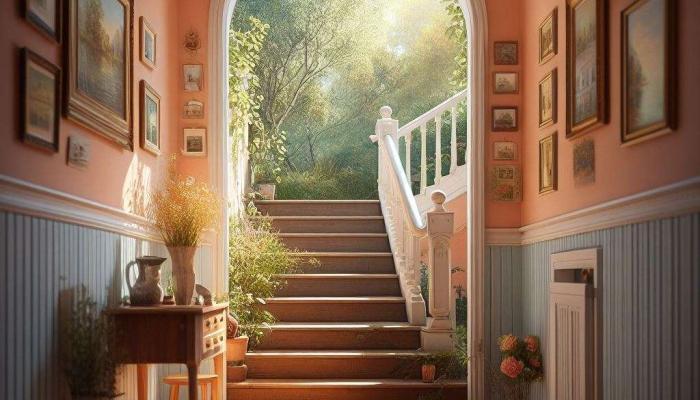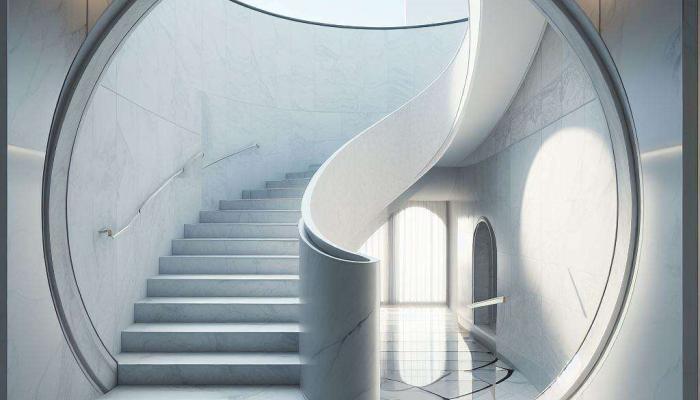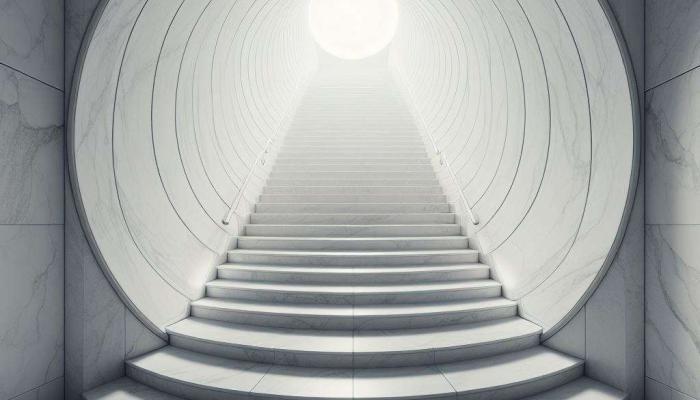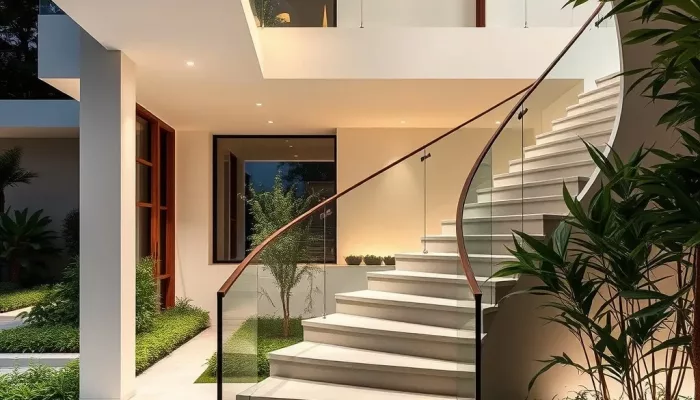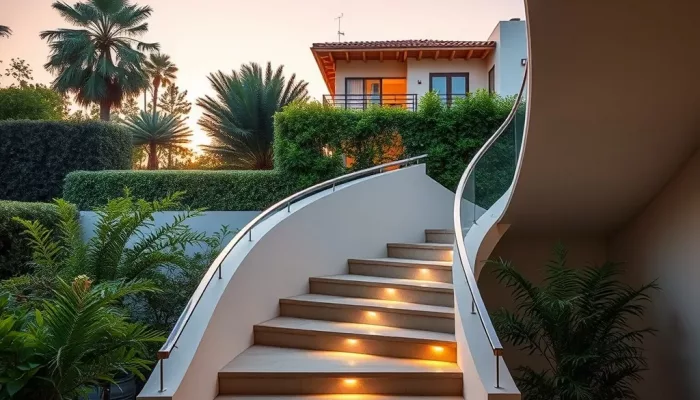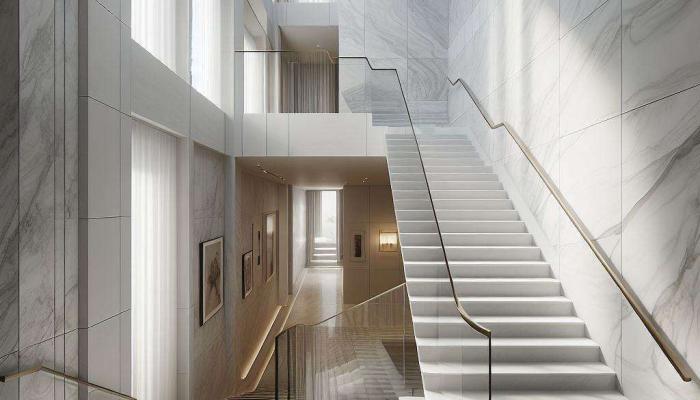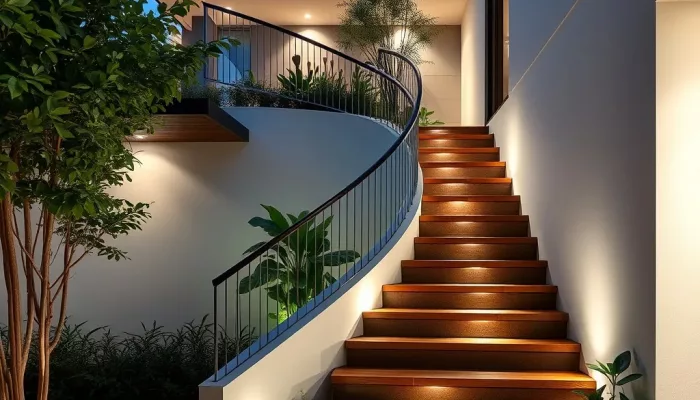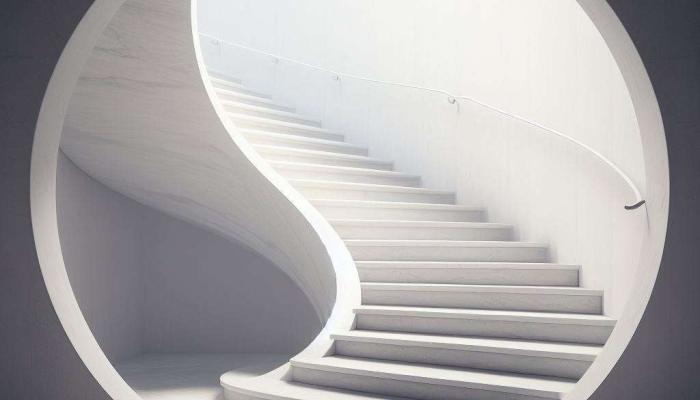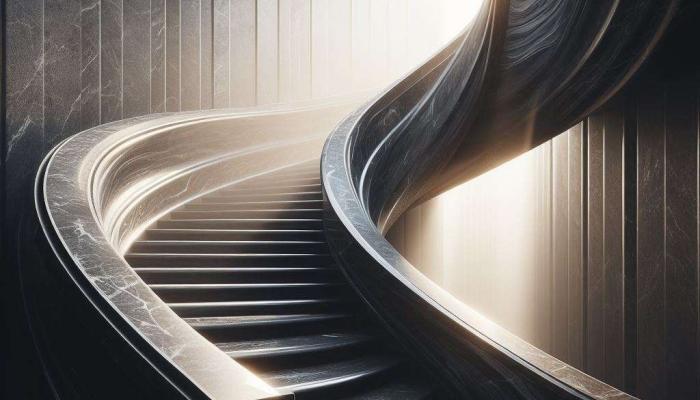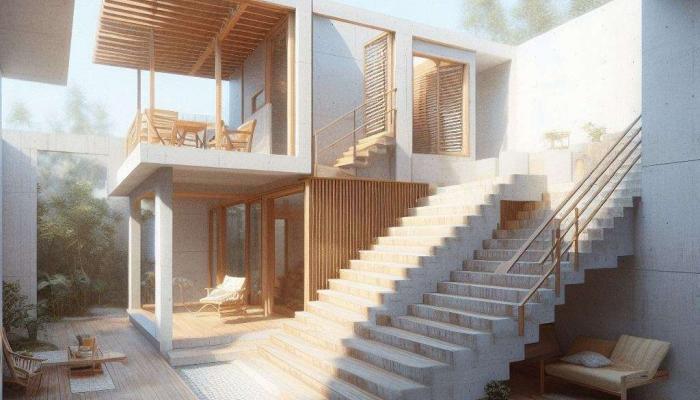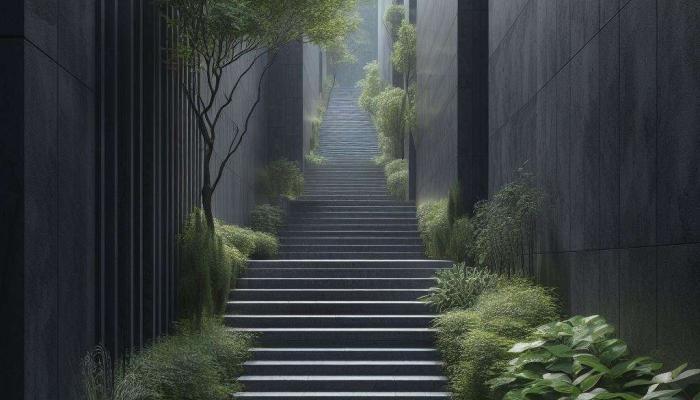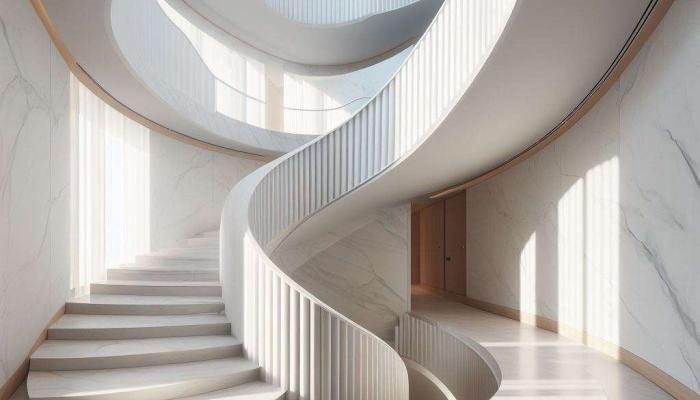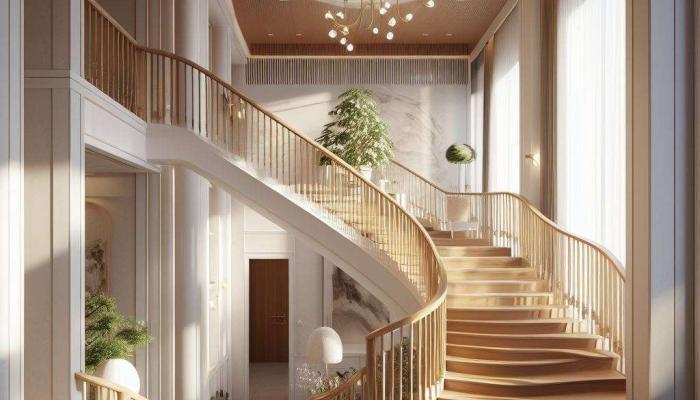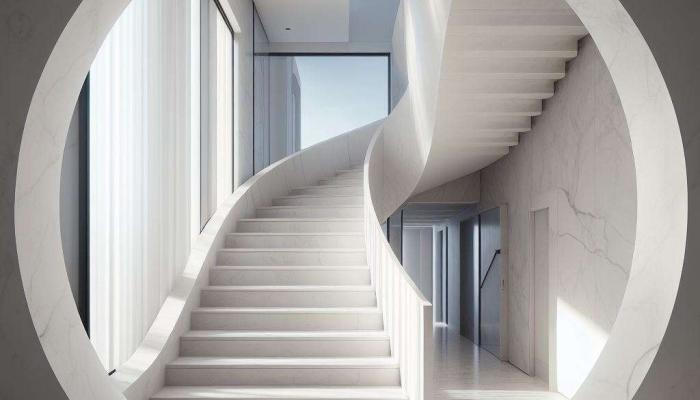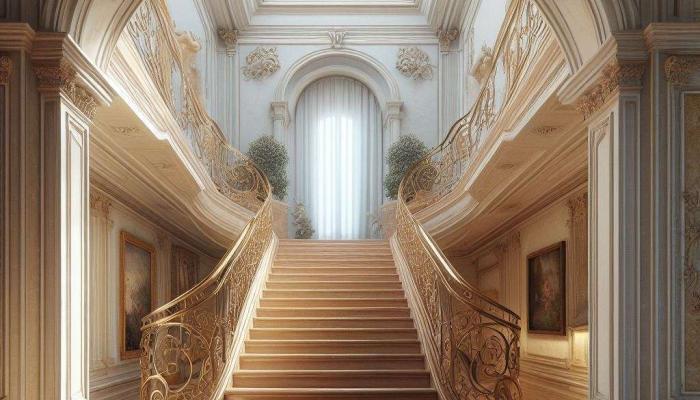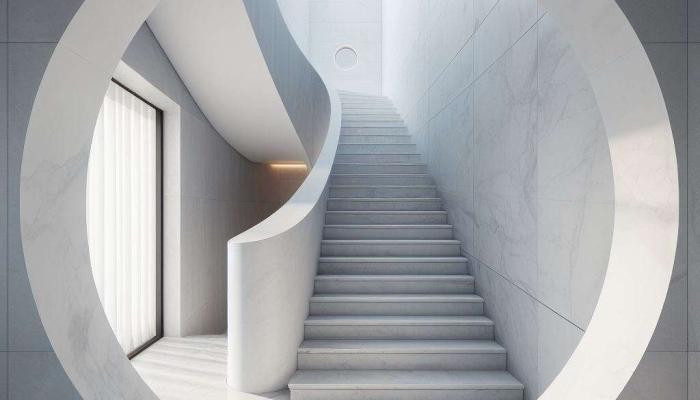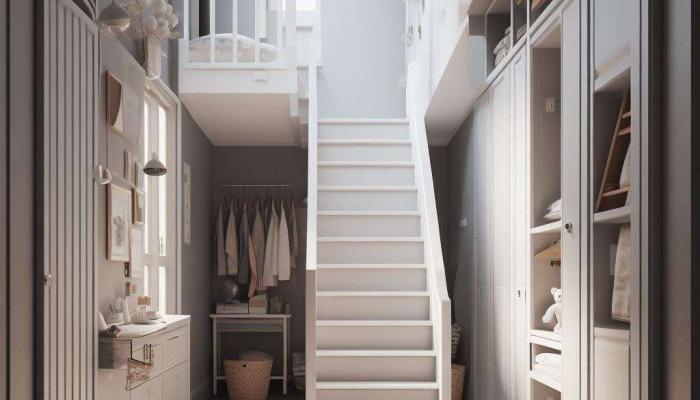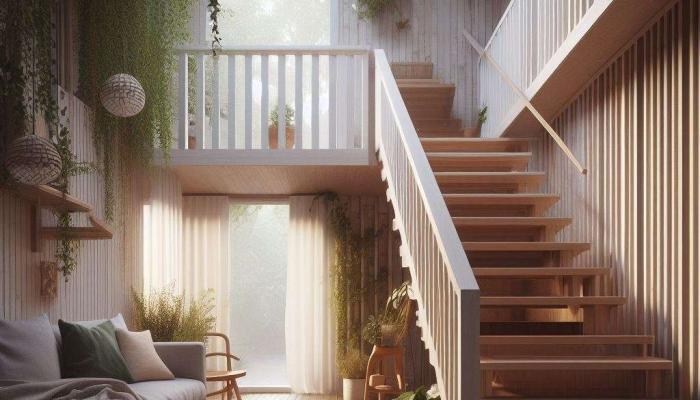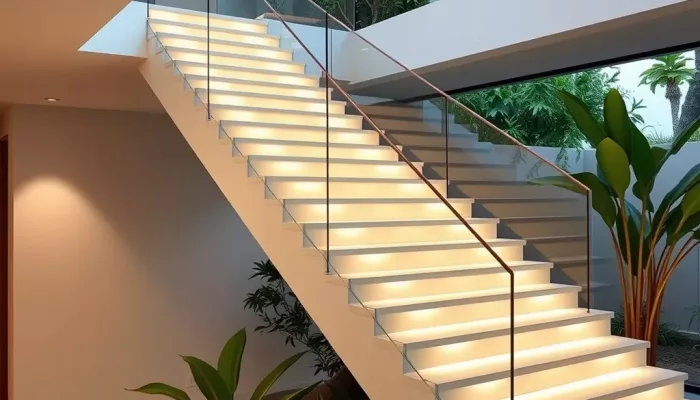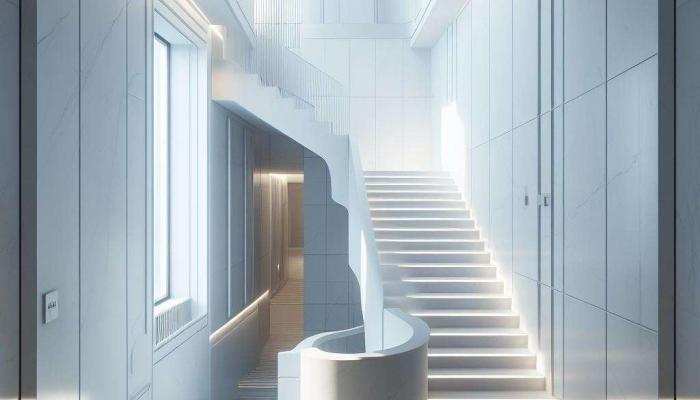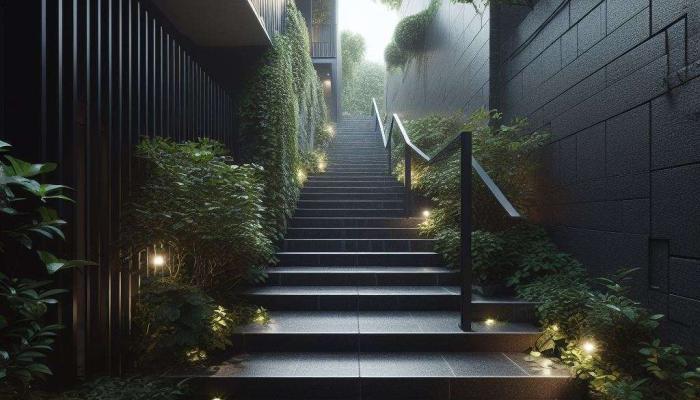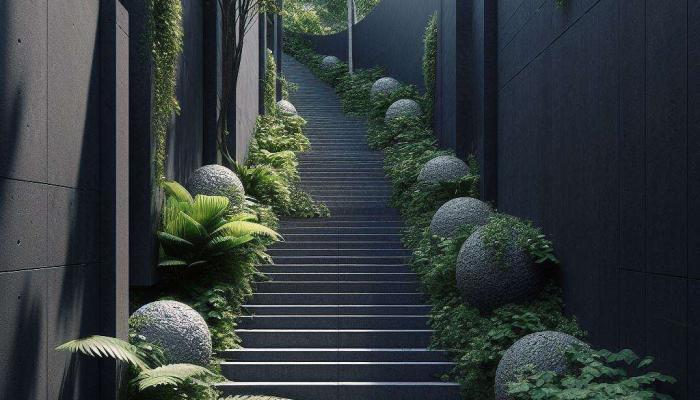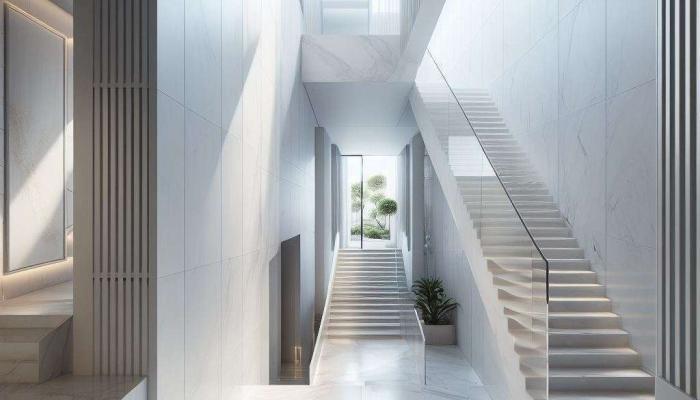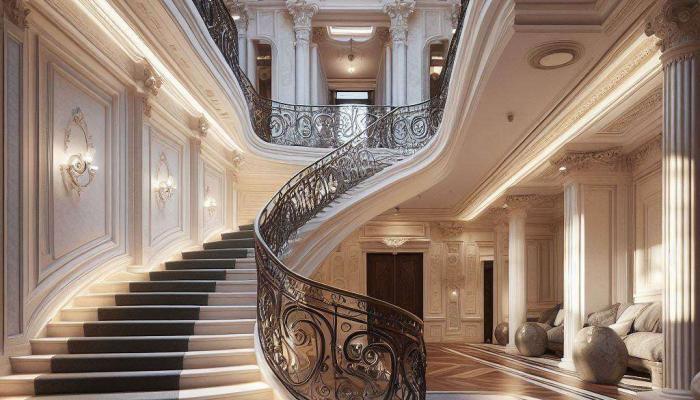AI Based Design
Staircase
Staircases, often overlooked as mere functional elements, have evolved into architectural focal points that marry form and function. Modern architectural designs of staircases transcend their utilitarian purpose, becoming sculptural masterpieces that elevate the aesthetic appeal of a space while ensuring seamless connectivity between different levels.
Contemporary staircase designs boast an array of innovative concepts, materials, and styles. From floating staircases seemingly suspended in mid-air to spiral designs that embody elegance and efficiency, each embodies a unique architectural statement.
The use of materials like sleek steel, glass, or warm woods provides a canvas for creativity, allowing architects to craft staircases that effortlessly blend into their surroundings or stand out as captivating centerpieces. Floating steps with minimalistic railings create an illusion of openness and lightness, accentuating modern design aesthetics.
Some designs incorporate elements of nature, with staircases resembling organic shapes or imitating the fluidity of natural forms. Others integrate smart lighting solutions, enhancing safety while contributing to the staircase’s overall visual allure.
The interplay between light and shadow often defines the appeal of these architectural marvels. Strategically placed windows or skylights can transform staircases into luminous pathways, casting intricate shadows that add depth and character to the space.
Furthermore, the design of staircases extends beyond aesthetics. Ergonomic considerations ensure that these structures prioritize safety, ease of use, and accessibility while maintaining their artistic appeal.
In essence, modern architectural designs of staircases transcend the conventional, transforming them into captivating works of art that seamlessly blend into their environment, redefine spatial dynamics, and add a touch of elegance and sophistication to any space they grace.
